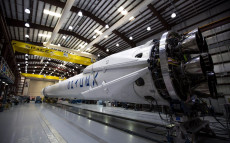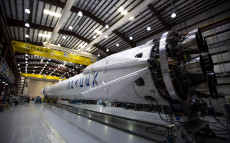- pathfindersAI
- Job Profile
Marine Engineers and Naval Architects
Summary
A Career as Marine Engineers and Naval Architects
What They Do
Marine engineers and naval architects are two intertwined professions dedicated to the design, construction, and maintenance of ships, submarines, and other marine vessels. Together, they form the backbone of modern maritime technology, crafting innovative solutions to navigate the world’s oceans safely and efficiently. Marine engineers focus on the internal workings, addressing propulsion, electrical systems, and other essential machinery. In contrast, naval architects concentrate on the external design, ensuring the vessel's overall form, structural integrity, and balance. These professionals harmonize engineering principles with cutting-edge technological advancements to produce durable and high-performing maritime transportation.
Job Responsibilities
Marine engineers and naval architects wear multiple hats, juggling several critical tasks that are pivotal to the seamless operation of marine vessels. Marine engineers are responsible for the design, development, and maintenance of propulsion systems, including engines and boilers. They also oversee the installation of electrical systems, refrigeration, and air conditioning. Regular inspections and troubleshooting are part of their routine to ensure vessel readiness and compliance with international safety standards.
Naval architects, meanwhile, are tasked with conceptualizing and designing the overall structure of a vessel. They produce detailed blueprints, using advanced software and simulations to test their designs for performance and safety. Additionally, naval architects are involved in supervising the construction process, collaborating with shipbuilders to ensure the adherence to their designs, and making necessary modifications when issues arise. They are also engaged in research and development to enhance vessel efficiency, fuel economy, and environmental sustainability.
Essential Skills
The intricate nature of marine engineering and naval architecture demands a robust set of essential skills. Both professions require a strong foundation in mathematics and physics, as these are crucial for solving the complex problems associated with ship design and systems engineering. Marine engineers must exhibit exceptional technical aptitude, attention to detail, and problem-solving abilities to deal with the intricate machinery and systems aboard a vessel. Proficiency in computer-aided design (CAD) software and an understanding of regulatory codes are also imperative.
Naval architects must possess excellent spatial awareness and visualization skills to translate design concepts into practical, functioning vessels. Creativity combined with pragmatic engineering knowledge allows them to innovate while maintaining structural integrity and performance efficiency. Both careers also necessitate strong teamwork and communication skills, as professionals frequently collaborate with other engineers, designers, and construction crews.
Educational Pathways
The journey to becoming a marine engineer or naval architect typically begins with a bachelor's degree in marine engineering, naval architecture, or a closely related field such as mechanical engineering or ocean engineering. Renowned universities and specialized maritime colleges offer programs specifically tailored to these careers, comprising courses in fluid dynamics, thermodynamics, materials science, and advanced mathematics.
Additionally, practical experience through internships or cooperative education programs is indispensable, providing hands-on learning and exposure to real-world challenges. For those aspiring to advance into higher managerial roles or specialized sectors, pursuing a master’s degree or Ph.D. in marine engineering or naval architecture can offer deeper expertise and broaden career opportunities. Professional certifications, such as those from the Society of Naval Architects and Marine Engineers (SNAME), can further enhance one's qualifications and industry standing.
Career Prospects
The field of marine engineering and naval architecture presents promising career prospects, driven by the ever-evolving demands of global trade, naval defense, and maritime innovation. Graduates can find opportunities in various settings, including shipbuilding companies, maritime consultancies, government agencies, and research institutions. As international trade expands and environmental regulations become stricter, there is a growing demand for professionals equipped to design eco-friendly and efficient vessels.
In addition to design and construction, career paths in maintenance, repair, and systems optimization are critical areas where marine engineers and naval architects can excel. Emerging technologies, such as autonomous ships and advanced propulsion systems, also create new avenues for specialization and innovation within the field.
Conclusion
Marine engineers and naval architects are essential contributors to the safe and efficient operation of our world's maritime fleet. Their roles encompass a diverse range of responsibilities, from intricate system design to comprehensive structural planning. To thrive in this dynamic field, individuals must possess a strong technical foundation, practical experience, and a continuous commitment to innovation and lifelong learning. With expanding career opportunities driven by global trade and technological advancements, those who embark on this path can look forward to a rewarding and impactful career in the maritime industry.
Video
Compensation
| State | Median Salary | Median Hourly | Positions |
|---|---|---|---|
| AL | 88,760 | 42.67 | 100 |
| AK | * | * | 40 |
| CA | 123,920 | 59.58 | 260 |
| DC | 164,420 | 79.05 | 240 |
| GA | 84,730 | 40.74 | 80 |
| LA | 100,190 | 48.17 | 140 |
| ME | 105,580 | 50.76 | 190 |
| MD | 106,100 | 51.01 | 400 |
| MI | 77,210 | 37.12 | 40 |
| MS | 99,380 | 47.78 | 50 |
| NY | 103,410 | 49.72 | 460 |
| OR | 109,360 | 52.58 | 30 |
| PA | * | * | 360 |
| RI | 99,300 | 47.74 | 160 |
| SC | 128,550 | 61.81 | 100 |
| TX | 105,220 | 50.59 | 600 |
| WA | 107,900 | 51.88 | 440 |
| WI | 74,880 | 36.00 | 80 |
Similar Occupations
In this area you will find other occupations that are close to the one you were viewing in tasks, knowledge and work environment. If the primary job profile you are viewing isn't quite to your liking, take a look around and see what else is available.
Basic and Premium Accounts have more alternative occupations available than the Free account.

Aerospace Engineering and Operations Technologists and Technicians - 17-3021.00
Aerospace Engineering and Operations Technologists and Technicians assist in the design, testing, and maintenance of aircraft, spacecraft, and related systems and equipment. They utilize technical skills and advanced tools to ensure the functionality, safety, and efficiency of aerospace technologies and operations.
-
$77,830/yr
Median Pay -
10,640
Number of Jobs

Aerospace Engineers - 17-2011.00
Aerospace Engineers design, develop, and test aircraft, spacecraft, and related systems and equipment to ensure they meet safety, performance, and regulatory standards. They work on a range of areas including structural design, navigation systems, propulsion, and aerodynamics to advance aviation and space exploration technology.
-
$130,720/yr
Median Pay -
66,660
Number of Jobs